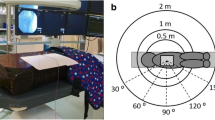Abstract
The composition of protective aprons worn by X-ray personnel to shield against secondary radiation is changing. Lead is being replaced by either lead-free or composite (lead with other high atomic numbered elements) materials. These newer aprons are categorised by manufacturers in terms of lead equivalent values, but it is unclear how these stated values compare with actual lead equivalent values. In this work, the actual lead equivalence of 41 protective aprons from four manufacturers, all specified as having 0.25 mm lead equivalence, were investigated with transmission experiments at 70 and 100 kVp. All aprons were in current use. The aprons were screened for defects, and age, weight and design was recorded along with details of associated quality assurance (QA). Out of the 41 protective aprons examined for actual lead equivalence, 73% were outside tolerance levels, with actual levels in some aprons demonstrating less than half of the nominal values. The lack of compatibility between actual and nominal lead equivalent values was demonstrated by aprons from three of the four manufacturers investigated. The area of the defects found on screening of the protective aprons were within recommendations. The results highlight the need for acceptancy and ongoing checks of protective aprons to ensure that radiation exposure of imaging personnel is kept to a minimum.





Similar content being viewed by others
References
Hubbert TE, Vucich JJ, Armstrong MR (1993) Lightweight aprons for protection against scattered radiation during fluoroscopy. Am J Roentgenol 161:1079–1081
Institute of Physics and Engineering in Medicine (2002) Medical guidance notes. Paragraph 3.119
Moore B, VanSonnenberg E, Casola G, Novelline RA (1992) The relationship between back pain and lead apron use in radiologists. Am J Roentgenol 158:191–193
Webster EW (1966) Experiments with medium-Z materials for shielding against low energy X-rays. Radiology 86:146
Yaffe MJ, Mawdsley GE, Lilley M, Servant R, Reh G (1991) Composite materials for X-ray protection. Health Phys 60(5):661–664
Graham DT (1996) Principles of radiological physics, 3rd edn. Churchill Livingstone, Singapore
International Standard IEC 1331-1 (1994) Protective devices against diagnostic medical X-radiation. International Electrotechnical Commission, Geneva, Switzerland
Murphy PH, Wu Y, Glaze S (1993) Attenuation properties of lead composite aprons. Radiology 186:269–272
Christodoulou EG, Goodsitt MM, Larson SC, Darner KL, Satti J, Chan HP (2003) Evaluation of the transmitted exposure through lead equivalent protective aprons used in a radiology department, including the contribution from backscatter. Med Phys 30(6):1033–1038
National Council on Radiation Protection and Measurements (2001) Structural shielding design for diagnostic medical X-ray facilities. Table A.1, 121
Lambert K, McKeon T (2001) Inspection of lead aprons: criteria for rejection. Health Phys 80(5):S67–S69
Michel R, Zorn MJ (2002) Implementation of an X-ray radiation protective equipment inspection program. Health Phys 82:S51–S53
Glaze S, LeBlanc AD, Bushong SC (1984) Defects in new protective aprons. Radiology 152:217–218
Johnston DA, Brennan PC (2000) Reference dose levels for patients undergoing common diagnostic X-ray examinations in Irish hospitals. Br J Radiol 73:396–402
Ng K-H, Rassiah P, Wang H-B et al. (1998) Doses to patients in routine X-ray examinations in Malaysia. Br J Radiol 71:654–660
Neofotistou V, Vano E, Padovani R et al. (2003) Preliminary reference levels in interventional cardiology. Eur Radiol 13:2259–2263
Author information
Authors and Affiliations
Corresponding author
Rights and permissions
About this article
Cite this article
Finnerty, M., Brennan, P.C. Protective aprons in imaging departments: manufacturer stated lead equivalence values require validation. Eur Radiol 15, 1477–1484 (2005). https://doi.org/10.1007/s00330-004-2571-2
Received:
Revised:
Accepted:
Published:
Issue Date:
DOI: https://doi.org/10.1007/s00330-004-2571-2




